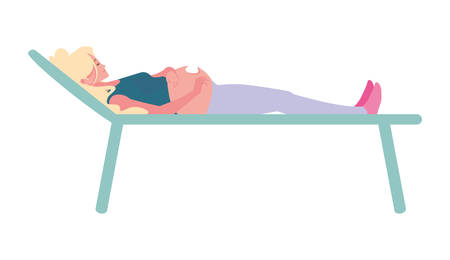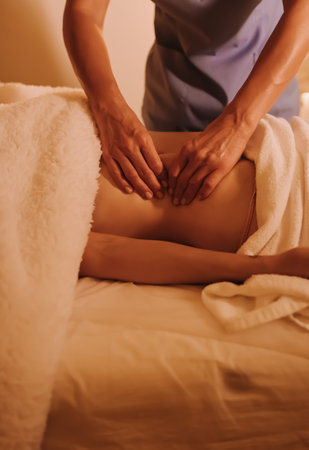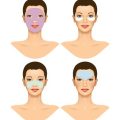Introduction to Body Skin Tightening Treatments
In recent years, body skin tightening treatments have witnessed a remarkable surge in popularity across the UK. As more people seek effective ways to address concerns like sagging skin, stretch marks, or loss of firmness, these innovative procedures have become an integral part of British beauty and wellness routines. But what exactly are body skin tightening treatments? Simply put, they are non-invasive or minimally invasive procedures designed to restore elasticity, improve skin texture, and create a smoother, more youthful appearance. From advanced radiofrequency devices to ultrasound technology and laser therapies, the range of options available in clinics throughout the UK is both diverse and cutting-edge. This growing demand reflects not only evolving beauty standards but also the desire for confidence-boosting solutions that fit seamlessly into busy lifestyles. As we explore the rise of these treatments in Britain, it’s important to understand how they work and why so many individuals are choosing them as their preferred route to firmer, radiant skin.
2. Cultural Factors Influencing Body Aesthetics in the UK
The British perspective on body image, ageing, and appearance has long been shaped by a mix of traditional values and modern influences. While there is a historical emphasis on modesty and subtlety in personal presentation, recent years have witnessed a growing openness to aesthetic treatments, particularly non-invasive options like body skin tightening. This evolution is not only about vanity; it reflects a broader cultural shift towards self-care, confidence-building, and proactive ageing.
Changing Attitudes Towards Ageing and Appearance
Brits have become increasingly mindful of the natural ageing process and its impact on self-esteem. Where once visible signs of ageing were accepted as an unavoidable part of life, more people are now seeking ways to maintain a youthful yet authentic look. This trend aligns with the UK’s growing focus on wellbeing and empowerment—choosing treatments that help individuals feel comfortable in their own skin without dramatic transformations.
Influence of Social Media and Celebrity Culture
The influence of social media cannot be underestimated. British celebrities, influencers, and television personalities often set trends for the wider public, normalising conversations around cosmetic enhancements. The result is a more open dialogue about body image concerns, reducing stigma and encouraging both men and women to explore their options. Social platforms also foster communities where people share their experiences with treatments, further demystifying the process.
Cultural Values vs Modern Trends: A Balancing Act
| Traditional British Values | Modern Trends in Aesthetics |
|---|---|
| Emphasis on natural beauty | Acceptance of cosmetic treatments for self-confidence |
| Privacy about personal choices | Openness and discussion on social media |
| Preference for subtle changes | Desire for noticeable but natural-looking results |
| Avoidance of overt displays of vanity | Pride in self-investment and self-care routines |
This interplay between tradition and modernity is driving demand for advanced yet subtle treatments like body skin tightening. Patients are looking for solutions that honour their desire for authenticity while allowing them to feel confident at every stage of life. As British society continues to evolve, these nuanced cultural attitudes will remain central in shaping the future of aesthetic trends across the UK.

3. Technological Advancements and Treatment Options
The landscape of body skin tightening in the UK has undergone a remarkable transformation, thanks to significant technological advancements. Non-surgical skin tightening procedures have surged in popularity as British patients increasingly seek effective solutions that avoid the downtime and risks associated with invasive surgery. In recent years, innovative devices harnessing radiofrequency, ultrasound, and laser technologies have emerged as frontrunners in many reputable UK clinics.
Non-Surgical Innovations Leading the Way
Among the most popular non-invasive treatments are radiofrequency (RF) therapies, such as Thermage and Morpheus8, which use controlled heat to stimulate collagen production and tighten sagging skin. High-intensity focused ultrasound (HIFU), often branded as Ultherapy, is another sought-after procedure. It delivers precise energy beneath the skin’s surface, promoting natural lifting and firming effects over time. These treatments are especially favoured for their ability to target multiple areas—arms, abdomen, thighs—with minimal discomfort and no need for lengthy recovery periods.
Popular Procedures in UK Clinics
UK aesthetics clinics are at the forefront of offering bespoke solutions tailored to individual needs. RF microneedling has gained traction for its dual-action approach: combining microneedling with thermal energy to enhance both texture and tightness. Laser-based treatments like Fotona TightSculpting provide a two-step process for body contouring and firming, delivering visible results with little disruption to daily life. The versatility of these methods means patients can now address concerns ranging from post-weight loss laxity to age-related sagging with greater confidence.
Patient Safety: A Top Priority
While enthusiasm for these procedures continues to grow, safety remains paramount for both practitioners and clients in the UK. Reputable clinics adhere strictly to regulatory guidelines set by bodies such as the Care Quality Commission (CQC). Comprehensive consultations, patch tests, and personalised treatment plans are standard practice, ensuring that each patient’s unique skin type and medical history are carefully considered. Moreover, clinicians invest in ongoing training to stay abreast of emerging technologies and maintain high standards of care.
Ultimately, these technological strides offer new hope for those seeking subtle yet noticeable improvements without going under the knife. With robust safety protocols and a wealth of advanced options now available across Britain, it’s little wonder that more individuals feel empowered to explore non-surgical skin tightening as part of their self-care journey.
4. Patient Perspectives and Motivations
Understanding why individuals across the UK are increasingly drawn to body skin tightening treatments offers valuable insight into both cultural trends and patient satisfaction. While each journey is unique, common motivations and shared experiences emerge from conversations with patients nationwide.
Key Reasons for Seeking Skin Tightening Treatments
| Motivation | Description |
|---|---|
| Post-Weight Loss Confidence | Many patients seek treatment after significant weight loss, aiming to improve skin elasticity and embrace their new shape with pride. |
| Aging Gracefully | Individuals in midlife and beyond often wish to address sagging or crepey skin, wanting to look as vibrant on the outside as they feel within. |
| Post-Pregnancy Changes | Mothers frequently turn to these treatments to restore firmness and reclaim a sense of self after childbirth. |
| Event Preparation | Some opt for skin tightening ahead of important milestones—weddings, holidays, or reunions—for a confidence boost. |
Patient Experiences: Results and Realities
The majority of patients report positive changes not only in appearance but also in self-esteem. Many share that results are gradual yet rewarding, requiring patience and adherence to practitioner advice. A recurring theme is the appreciation for non-surgical options that fit seamlessly into busy British lifestyles. However, expectations are managed carefully; most understand that while treatments provide noticeable improvement, outcomes depend on individual factors such as age, skin type, and lifestyle choices.
Aftercare Insights from Real Patients
| Aftercare Step | Patient Feedback |
|---|---|
| Hydration & Moisturising | “Keeping my skin hydrated post-treatment made a real difference in comfort and results.” |
| Avoiding Sun Exposure | “I was careful with sun protection—my practitioner stressed this, and it helped avoid irritation.” |
| Follow-Up Appointments | “Regular check-ins reassured me I was healing well and getting the best outcome possible.” |
| Lifestyle Adjustments | “Staying active and eating well seemed to enhance the effects—its all about a holistic approach.” |
Cultural Nuances in Patient Attitudes
British patients often express a preference for subtle enhancements over dramatic changes. There is a strong focus on maintaining natural beauty, with many seeking improvements that allow them to feel like the best version of themselves rather than someone entirely different. This aligns closely with the understated elegance often celebrated in UK culture. Open conversations with friends or practitioners are encouraged, fostering realistic expectations and positive emotional outcomes.
5. The Role of Media and Social Trends
British media and social trends have an undeniable influence on shaping the public’s perception of beauty, particularly when it comes to body skin tightening treatments. The mainstream press, from glossy magazines to popular morning shows, regularly features stories about celebrities and influencers who embrace these non-surgical enhancements. This coverage not only normalises such procedures but also subtly encourages viewers to consider them as a viable option for self-improvement.
The Influence of Celebrity Culture
In the UK, celebrity culture wields significant power over beauty ideals. High-profile personalities—whether seen on “Love Island” or gracing the pages of the tabloids—often share their experiences with aesthetic treatments, including body skin tightening. When admired figures openly discuss their journeys towards firmer, more youthful skin, it sends a strong message that these treatments are both accessible and desirable. For many Britons, especially younger generations, this visibility reduces stigma and fosters curiosity about what modern aesthetics can offer.
Social Media: A Digital Beauty Movement
The rise of social media platforms like Instagram and TikTok has accelerated the spread of beauty trends across the UK. Here, influencers regularly document their treatment experiences through before-and-after photos or honest reviews. These posts spark conversations and often go viral, creating digital communities where sharing recommendations is second nature. In this online environment, information about body skin tightening treatments is abundant, authentic, and immediate—helping potential patients feel more informed and empowered in their choices.
Cultural Shifts Towards Body Positivity and Choice
Interestingly, while there is still pressure to look a certain way, British media increasingly promotes messages of body positivity and personal choice. The conversation around beauty has shifted; it’s no longer just about conforming to a singular ideal but celebrating individual confidence and agency. Many patients now view body skin tightening not as a necessity to ‘fix’ flaws, but as an empowering step towards feeling comfortable in their own skin. This nuanced narrative helps people make choices based on self-love rather than societal pressure—mirroring broader cultural shifts within the UK.
6. Ethical Considerations and Future Outlook
As body skin tightening treatments continue to gain popularity across the UK, it is vital to reflect on the ethical dimensions that accompany this trend. The surge in demand brings questions around informed consent, patient expectations, and the responsible marketing of aesthetic procedures. Clinics and practitioners must ensure that individuals seeking these treatments are provided with clear, unbiased information regarding potential outcomes, risks, and limitations. Transparency is not only a professional obligation but also fosters trust between patients and providers.
Access and Inclusivity
The accessibility of body skin tightening treatments remains a significant concern. While advancements in technology have made non-surgical options more widely available, cost can still be a barrier for many. There is an ongoing conversation about how to make aesthetic medicine more inclusive, ensuring that individuals from all walks of life can make empowered choices about their bodies without financial or societal pressure. Moreover, promoting realistic beauty standards and encouraging self-confidence—regardless of whether one chooses treatment—should remain at the forefront of the industry’s ethos.
Regulation and Patient Safety
The UK’s regulatory environment for aesthetic treatments continues to evolve. Recent efforts by organisations such as the Care Quality Commission (CQC) aim to standardise safety protocols and practitioner qualifications, reducing the risk of harm to patients. These measures are crucial as the sector grows, helping protect both experienced clients and those new to cosmetic procedures.
The Road Ahead: Innovation and Responsibility
Looking ahead, future developments in body skin tightening are likely to be shaped by both technological innovation and shifting cultural attitudes. Non-invasive procedures will become increasingly sophisticated, offering better results with minimal downtime. However, the industry must balance progress with ethical stewardship—prioritising patient wellbeing over commercial interests. As British society continues its open dialogue about body image, self-acceptance, and personal choice, the field of aesthetic medicine has an opportunity to lead with integrity, supporting people in their journey towards confidence while maintaining high ethical standards.


